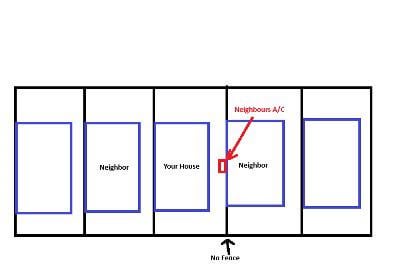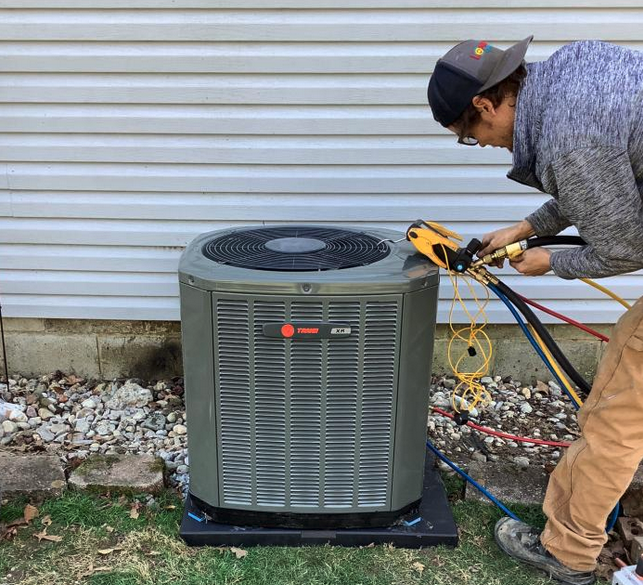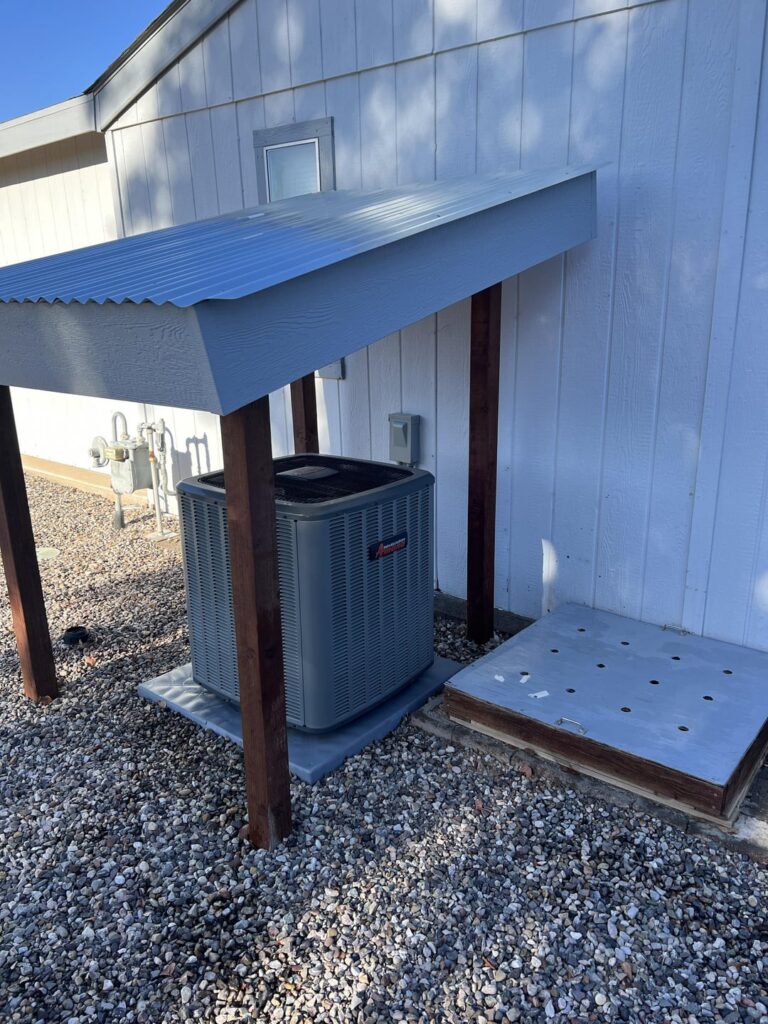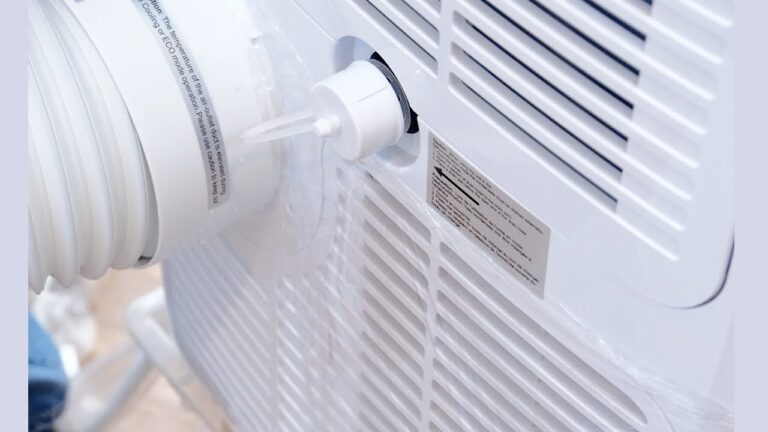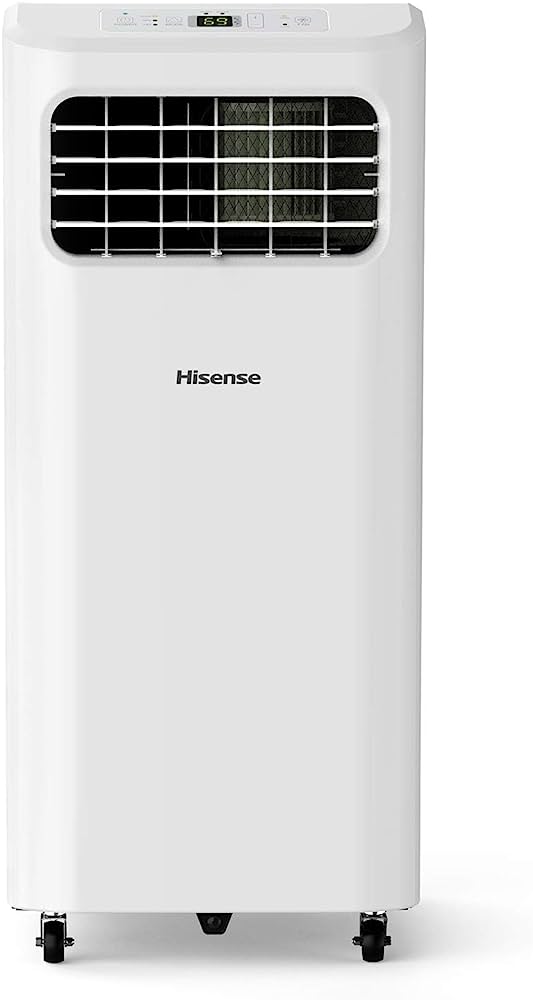How Close Can An Air Conditioner Be To Property Line: Essential Guidelines
An air conditioner should generally be at least 3-5 feet from the property line. Local zoning laws may vary.
Installing an air conditioner requires careful consideration of local zoning laws and property regulations. Proper placement ensures optimal performance and minimizes noise disturbances. Homeowners need to check with their local authorities to understand the specific setback requirements for their area.
Ensuring the air conditioner is the correct distance from the property line can prevent potential legal issues and neighborhood disputes. Always consult with a professional installer who is familiar with local codes. Thoughtful planning and adherence to regulations will lead to a more efficient and harmonious living environment.
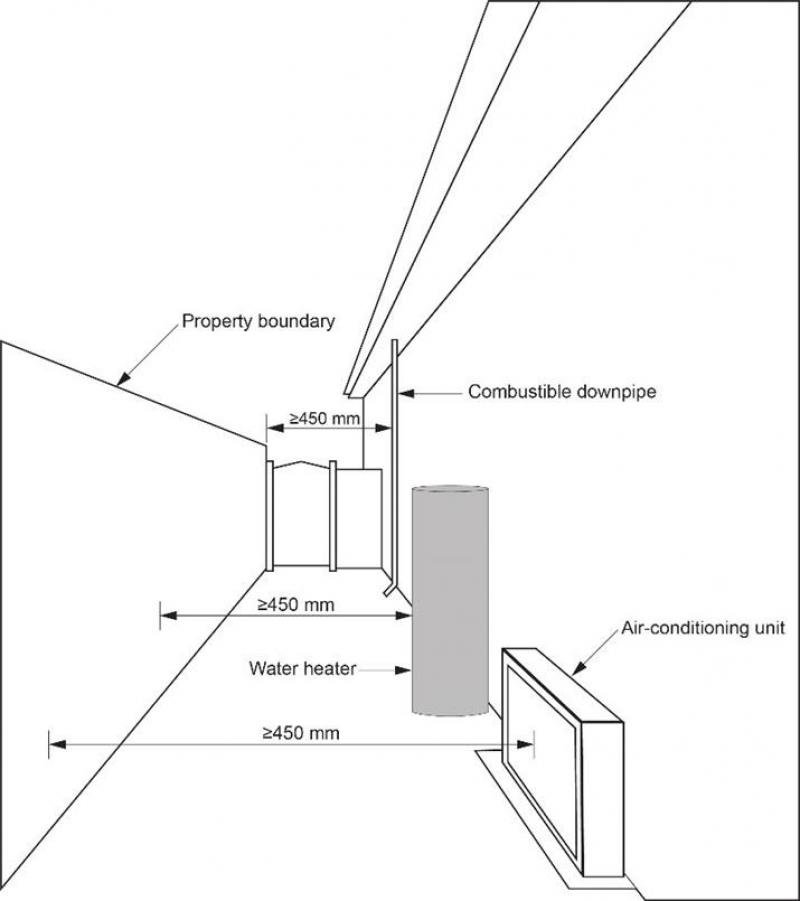
Credit: www.abcb.gov.au
Local Zoning Regulations
Understanding local zoning regulations is crucial for AC installation. These rules vary by location. They determine how close an air conditioner can be to the property line. Ignoring them can result in fines or required removal of the unit. Always check with your local zoning office.
Permits And Approvals
Local authorities often require permits for AC installations. This ensures the unit meets safety standards. You may need to submit detailed plans. This includes the proposed location of the air conditioner. Getting approval can take time, so plan ahead.
Some areas have specific forms. Check if your area has unique requirements. Sometimes, a simple application is enough. In other cases, a detailed site plan is necessary.
Common Restrictions
Common restrictions include distance from the property line. Most areas require a minimum distance of 3 to 5 feet. This ensures proper airflow and reduces noise for neighbors. Some places also have height restrictions.
Below is a table that outlines typical restrictions:
| Type of Restriction | Details |
|---|---|
| Minimum Distance | 3 to 5 feet from property line |
| Height Limit | Not above 6 feet |
Other restrictions may apply. Always verify with local authorities. This ensures compliance and avoids penalties.
Homeowner Association Rules
Homeowner Association (HOA) rules are important for community living. They ensure that every member follows certain standards. This maintains the neighborhood’s look and feel. These rules also cover how close an air conditioner can be to the property line. Understanding these guidelines is essential to avoid issues.
Community Guidelines
Each HOA has its own set of community guidelines. These rules can vary widely. Some HOAs may have strict rules. Others may be more lenient. Typically, these guidelines include:
- Minimum distance requirements for placing air conditioners
- Noise level restrictions to maintain peace
- Permits or approvals needed before installation
Check your HOA’s specific guidelines. This ensures you follow the rules. Compliance helps keep harmony in the community.
Possible Penalties
Not following HOA rules can lead to penalties. These penalties can include:
| Penalty Type | Description |
|---|---|
| Fines | Monetary charges for non-compliance |
| Legal Actions | HOA may take you to court |
| Forced Removal | HOA can demand removal of the air conditioner |
These penalties aim to enforce rules. They ensure everyone adheres to the community’s standards. It’s best to comply with HOA rules to avoid these consequences.
Noise Considerations
Choosing the right spot for your air conditioner is crucial. One key factor is noise. Noise affects both you and your neighbors. Understanding noise levels and how to mitigate them helps in making a smart choice.
Decibel Levels
Air conditioners produce noise measured in decibels (dB). Most units range between 50-70 dB. Here is a table showing common noise levels:
| Noise Source | Decibel Level (dB) |
|---|---|
| Normal Conversation | 60 dB |
| Air Conditioner | 50-70 dB |
| Vacuum Cleaner | 70 dB |
Units closer to property lines may disturb neighbors. High decibel levels impact comfort and peace. Always check your unit’s noise rating before installation.
Mitigation Techniques
Several techniques help reduce air conditioner noise:
- Sound Barriers: Install fences or walls around the unit.
- Vibration Pads: Place pads under the unit to absorb vibrations.
- Proper Placement: Install the unit away from quiet areas.
- Regular Maintenance: Clean and service the unit regularly.
Using these techniques helps keep noise levels low. Happy neighbors are the result of smart noise management.
Space And Accessibility
Determining how close an air conditioner can be to the property line involves considering space and accessibility. Proper placement ensures efficient operation and easy access for servicing.
Maintenance Access
Routine maintenance is crucial for an air conditioner’s longevity. Placing the unit too close to the property line can hinder technicians’ access. This can make tasks like cleaning coils and replacing filters difficult.
For optimal maintenance access, ensure there is at least 24 inches of clearance on all sides of the unit. This space allows technicians to move freely and perform necessary tasks without obstacles.
Emergency Situations
In emergency situations, quick access to the air conditioner is vital. Blocked or tight spaces can delay emergency repairs, leading to prolonged discomfort.
Additionally, ensure pathways to the unit are clear of debris and vegetation. This ensures quick and unhindered access during emergencies.
| Aspect | Recommended Clearance |
|---|---|
| Maintenance Access | 24 inches |
| Emergency Access | Clear pathways |
Ensuring proper space and accessibility around your air conditioner will save time and money. It will also ensure the unit operates efficiently and effectively.
Neighbor Relations
Placing your air conditioner near the property line can affect neighbor relations. It is important to consider their comfort and peace. This section will help you maintain harmony with your neighbors.
Communication Tips
Open communication can prevent many issues. Here are some tips:
- Discuss your plans with your neighbors before installation.
- Listen to their concerns and feedback.
- Provide them with details about the AC unit’s noise level.
Conflict Resolution
If conflicts arise, address them calmly. Follow these steps:
- Acknowledge your neighbor’s complaints.
- Find a solution that works for both parties.
- Consider adding noise-reducing barriers.
| Step | Action |
|---|---|
| 1 | Acknowledge complaints |
| 2 | Find a mutual solution |
| 3 | Consider noise barriers |
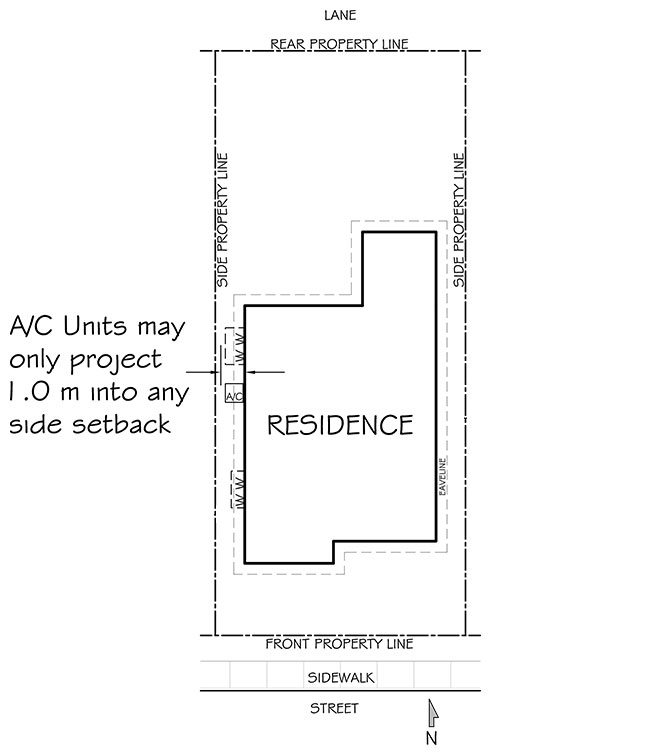
Credit: www.calgary.ca
Landscaping And Aesthetics
Placing an air conditioner near the property line involves more than just distance. Landscaping and aesthetics play a key role. This ensures the unit blends with the environment and stays hidden. Let’s explore how to achieve this.
Blending With Environment
Air conditioners can be unsightly if not properly managed. To keep your yard beautiful, consider these tips:
- Choose plants that can grow around the unit without blocking airflow.
- Opt for native species that match your local ecosystem.
- Use shrubs and trees to create a natural look.
Native plants require less maintenance. They also enhance the overall appearance of your landscape.
Hiding Units
Hiding your air conditioner can improve your yard’s aesthetics. Here are some effective methods:
- Install lattice screens or trellises around the unit.
- Use decorative fencing to conceal the air conditioner.
- Place large planters strategically to hide the unit.
These methods not only hide the unit but also add to your yard’s charm.
| Method | Benefit |
|---|---|
| Lattice Screens | Allows airflow and provides coverage |
| Decorative Fencing | Adds a stylish barrier |
| Large Planters | Enhances the visual appeal |
By incorporating these methods, you can maintain a beautiful and functional yard. Proper placement and smart landscaping ensure your air conditioner blends seamlessly with your surroundings.
Safety Precautions
When installing an air conditioner near your property line, safety is crucial. Proper placement ensures the unit operates safely and efficiently, protecting your home and family. Let’s delve into key safety precautions you need to consider.
Fire Safety
An air conditioner should be placed away from flammable materials. Ensure a clear space around the unit to prevent fire hazards. Keep the area free from leaves, papers, and debris. These items can easily catch fire if they come into contact with the unit.
Additionally, provide sufficient ventilation to avoid overheating. Overheating can lead to fires, endangering your property. Regular maintenance checks are also essential. Inspect the unit periodically for signs of wear and tear.
| Safety Measure | Description |
|---|---|
| Clear Space | Keep flammable items away from the unit. |
| Ventilation | Ensure the unit has proper airflow. |
| Maintenance Checks | Regularly inspect for wear and tear. |
Electrical Hazards
Electrical safety is another critical consideration. Ensure the air conditioner is installed by a licensed electrician. This prevents wiring issues that can cause electrical fires or shocks.
Use a dedicated circuit for the air conditioner. This reduces the risk of overloading your electrical system. Check that all electrical connections are secure and in good condition.
- Hire a licensed electrician.
- Use a dedicated circuit.
- Secure all electrical connections.
Ground the unit properly to avoid electrical hazards. Grounding helps in directing any stray electrical currents safely into the ground. This minimizes the risk of electrical shock or fire.
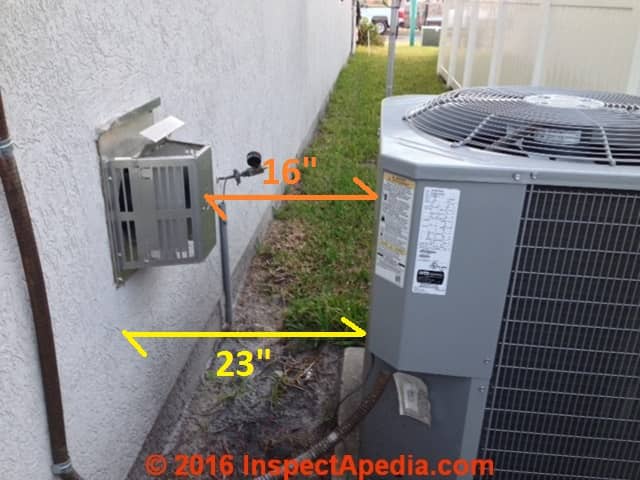
Credit: inspectapedia.com
Professional Installation
Ensuring your air conditioner is installed by professionals is crucial. This guarantees optimal performance and compliance with local regulations. Professional installation minimizes risks and ensures the unit’s longevity.
Hiring Experts
Hiring experts ensures your air conditioner is installed correctly. They know the proper distance from the property line. Professionals comply with local building codes. They have the right tools and experience.
- Certified technicians
- Knowledge of local codes
- Proper tools and equipment
Expert installers also offer maintenance tips. They help you avoid costly repairs. They guarantee the system’s efficiency. This is essential for a trouble-free experience.
Installation Best Practices
Following best practices during installation is vital. Proper placement ensures your air conditioner works efficiently. Here are some best practices:
- Maintain a safe distance from the property line.
- Ensure there is adequate airflow around the unit.
- Use vibration pads to reduce noise.
- Keep the unit away from direct sunlight.
Correct placement avoids legal issues. It also prevents damage to your property. Always consult with professionals.
| Aspect | Recommendation |
|---|---|
| Distance from property line | At least 3 feet |
| Airflow clearance | Minimum 2 feet around the unit |
| Noise reduction | Use vibration pads |
| Sunlight exposure | Avoid direct sunlight |
Adhering to these practices guarantees efficiency. It also extends the lifespan of your air conditioner.
Frequently Asked Questions
How Far Should An Ac Unit Be From A Fence?
An AC unit should be at least 2-3 feet from a fence. Proper spacing ensures efficient airflow and maintenance access.
How Much Clearance For An Air Conditioner?
Ensure at least 24 inches of clearance around your air conditioner for proper airflow and efficient operation.
How Close Can An Air Conditioner Be To The Property Line In California?
In California, air conditioners must be at least 3 feet from the property line. Check local regulations for specific requirements.
Conclusion
Ensuring your air conditioner is properly placed is vital for efficiency and compliance. Always check local regulations. Proper positioning can enhance performance and lifespan. Consult professionals for accurate advice. Keeping your unit within guidelines avoids legal issues and neighbor disputes.
Prioritize these steps for a seamless and efficient installation process.

